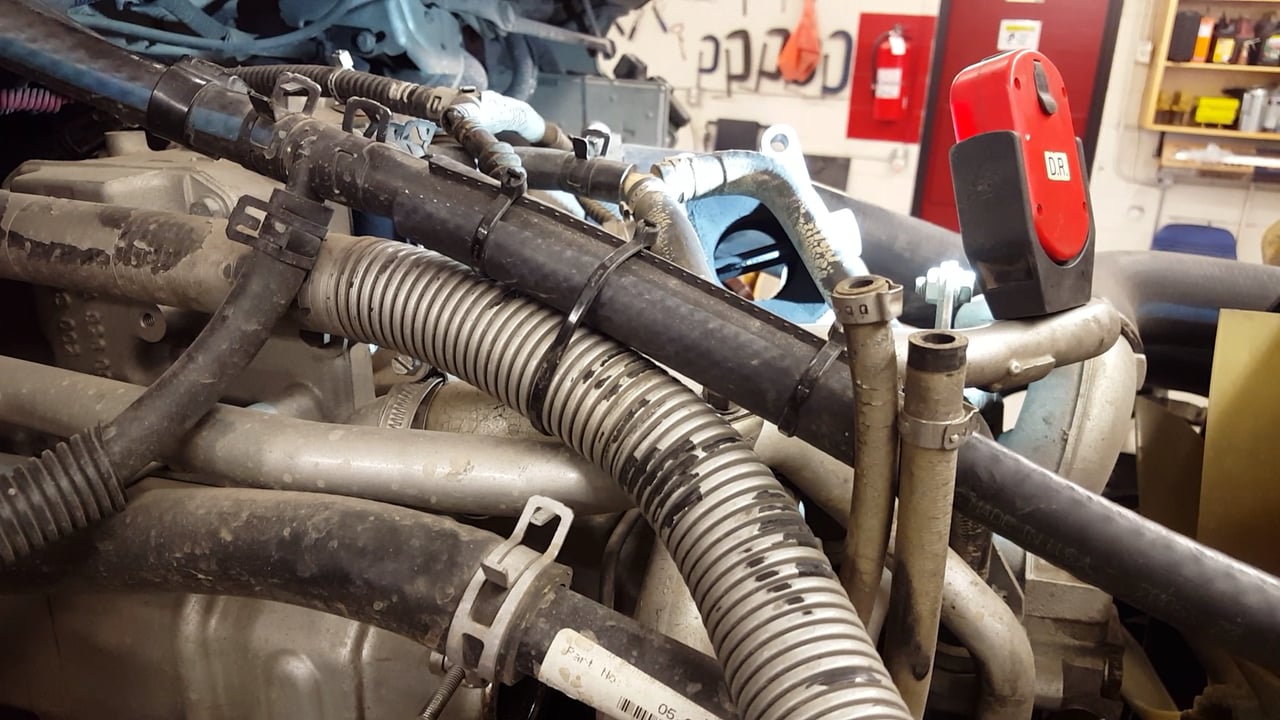We’re looking at an EGR valve on a Mercedes MBE 900 diesel engine. It isn’t working properly as shown in the video using the Mercedes DDDL 7 diagnostic software to check it out. By pulling it off of the intake it’s easy to see the valve open and close. Commanding the EGR with the software to open in different positions is a simple test to see if it’s running OK. At 0% it closes but that’s the only accurate move it makes. At 95% it’s stuck halfway.
At this point we are going to grab a new EGR valve and replace the original to see if it operates the way it’s supposed to when commanded. Some times the soot build up on the valve causes it to stick. On the other hand the motor that runs the valve could be out of sync as well. Trying a new EGR valve will tell us if we have to go beyond the valve itself to find the fault.
If you haven’t read up on how EGR works on a diesel engine I’ll do a quick explanation. The EGR valve recirculates a portion of engine exhaust back to the engine intake system. Mixing the exhaust gas with O2 dilutes it making gases inert to combustion which absorbs combustion heat reducing maximum cylinder temperatures and pressures. This is in turn reduces NOx.
In today’s diesel engines the EGR gases are cooled by a heat exchanger (EGR Cooler) to increase the density of the recirculated gas. Diesels always run with excess air and benefit from EGR rates up to 50% at idle to control NOx emissions. There is a disadvantage to this process with increased engine wear because of the carbon particulate that can wash past the piston rings into the engine oil.
This engine in the video is a 2008 and the cycle is ongoing with soot build up. Since emissions were introduced in 2007 this engine came into the picture in the beginning failing to keep the emission byproducts out of the system. The build up of soot on the EGR valve is very common with all emission controlled engines so it comes down to either cleaning up the build up or replacing the component.
Sensors like the boost sensor is a common failure simply because it’s right in the mix and subjected to the tar like substance that sticks like glue. Once we clean up this fault it will be a matter of time when the problem comes back. That’s the way it is……







